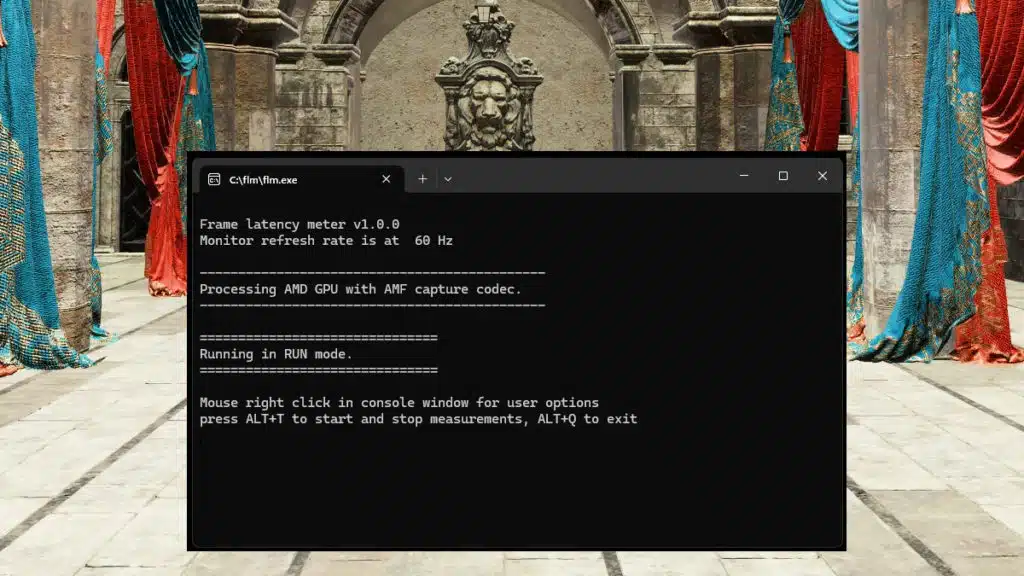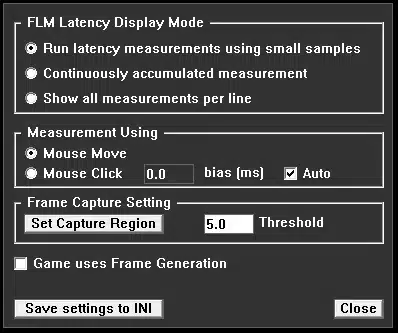Frame Latency Meter (FLM), a free tool that allows gamers, professionals, and anyone else who wants to optimize their overall gaming experience by measuring the response time of their games with mouse events, is now available for download on GitHub, AMD has announced under GPUOpen. The tool, which measures the entire latency of the mouse response time, from the moment the mouse is moved to the moment the frame is displayed on the screen, includes a selection of frame capture codec options that include Advanced Media Framework (AMF), optimized for AMD GPUs, as well as Desktop Duplication (DXGI) for use on any GPU.
Frame Latency Meter links:
Key features include:
- Mouse response time latency measurements
- Detailed, exportable latency statistics
- AMF and DXGI capture codec options
- Easy to customize with hotkey configuration for measurements
- Sequenced frame captures via configurable keys
- Screen capture region configuration
- Compatible with Windows platforms
AMD on how it works:
- “The app continuously captures the frames, and compares each frame to the previous one within the selected region.”
- “The app then generates a mouse movement event (this is standard Windows functionality) and waits for the frame contents to change.”
A look at the options:
AMD on its new tool:
The tool provides detailed statistics for latency and “effective framerate” measurements, which is exported to a csv file for further analysis. This feature is especially useful for gamers and professionals who require precise measurements for their work. We understand that every user has different preferences and requirements. That’s why FLM tool allows users to configure hotkeys for enabling measurements, setting the screen capture region, measurement formats and more.
One of the unique features of FLM’s mouse latency measurement tool is that you don’t need to use muzzle flash from bullets to measure latency. This means that you can quickly make as many measurements as you wish without worrying about running out of ammo. As a result, the application can work autonomously to collect an unlimited number of measurement samples, reaching a much higher accuracy.


